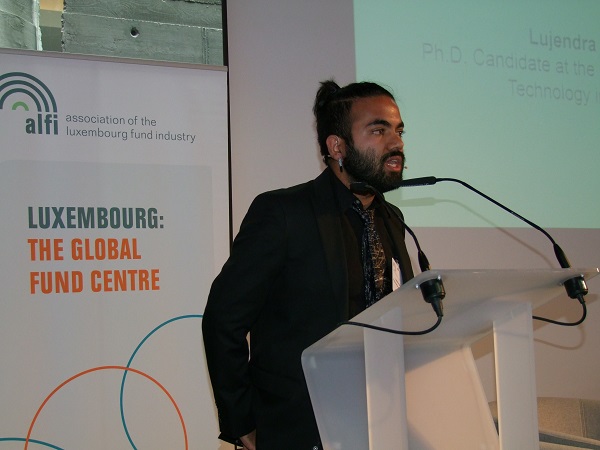
Lujendra Ojha, PhD candidate at the Georgia Institute of Technology in Atlanta in the US, was invited as guest speaker at Thursday's Impact Investing Conference held at the Espace Namur in Luxembourg-Hamm, organised by the Association of the Luxembourg Fund Industry (ALFI), in association with LuxFLAG and the European Microfinance Platform (e-MFP).
He delivered an out-of-the-box presentation entitled "Follow the Water". He said that 2 of the most abundant elements are hydrogen and oxygen and when they combine they produce water. In the solar system, Mercury's surface is hot so it is unlikely to have surface water, but underground water could be possible; Venus is similar. He also referred to the current and historical situations of the planets.
But Mars is interesting; he mentioned the dust storms and giant dust clouds. Mars is also very active geographically and has many avalanches. He posed questions such as: Is it habitable? Can we go there? The answers are based on the issue of water.
Water used to be available in abundance on Mars. About 3.8 billion years ago, Mars used to look like Earth does today. Ten years ago a mission to Mars found the five main elements, but is there water on Mars? Going through terabytes of data, he discovered that the surface of Mars is forever changing, with channels being formed. He showed a video of the Horowitz crater on Mars and explained that the issue of temperature is crucial as water forms as ice below 0C and as steam above 100C. However, the consistency of the water can change this quite considerably. He also showed the visual results of an experiment on earth where daytime temperatures meant that water evaporated, leaving traces very similar to the traces photographed on Mars.
In response to a question from the audience, he confirmed that the water that evaoprates goes into the atmosphere and falls as snow - they have found no evidence of rain falling on Mars. He also said that they have found no evidence of life on Mars.
He concluded by stating that water is precious and the basis for life, wherever that may be.
Photo by Geoff Thompson: Lujendra Ojha








